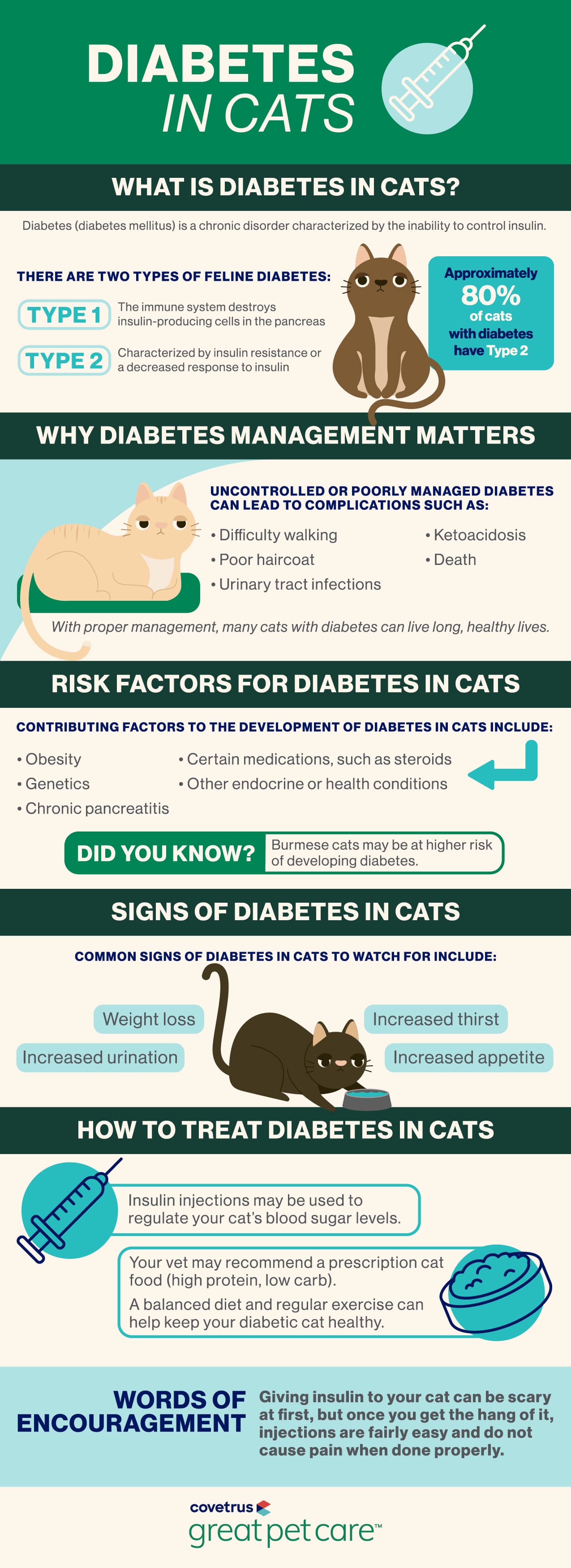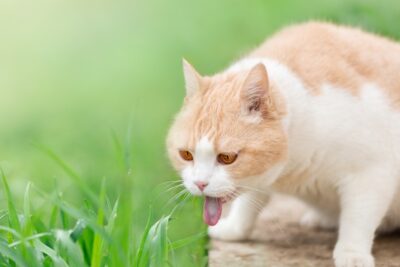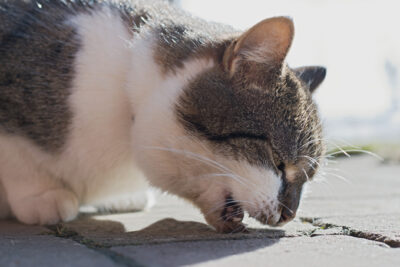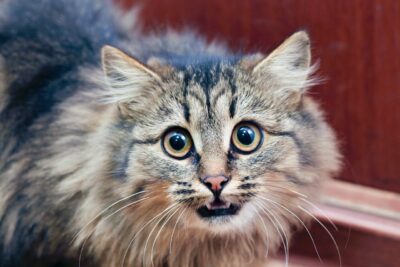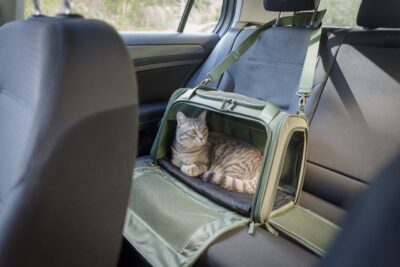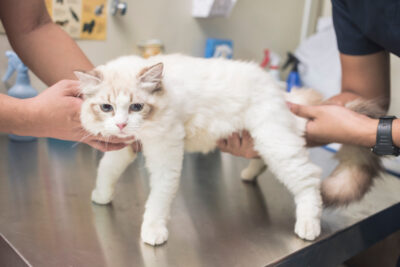Diabetes in Cats

Overview
Whether you’re a seasoned pet parent or a brand new one, a sudden illness in a pet can be scary. You have a lot of questions and you need all the answers now.
On-going medical issues, like diabetes in cats, take even more consideration. From medication to possible lifestyle changes, there’s a lot to learn. The first thing to keep in mind is that many diabetic cats can lead long lives.
“Diabetes mellitus is not a death sentence,” says Dr. Sasha Gibbons, of Just Cats Veterinary Hospital in Stamford, Connecticut. “There are many economical ways to manage diabetes.”
Feline Diabetes: Understanding Key Terms
To understand feline diabetes, you’ll first need to know some key terminology and some basic feline physiology. Every time your cat eats a meal, your cat’s body breaks down food into sugar molecules called glucose. Glucose is then absorbed into the blood stream – it is the main sugar found in blood. When we talk about a cat having high or low blood sugar, we are referring to their blood glucose level.
Blood glucose levels are maintained in part by a hormone called insulin. When your cat eats a meal, insulin is released from the pancreas. Insulin acts on cells throughout the body – primarily liver, muscle, and fat cells – telling them to uptake glucose into the cell. The glucose is then either used for energy or stored for later use. This keeps blood sugar levels stable and provides cells with an energy supply.
What is Feline Diabetes?
Cat diabetes, or diabetes mellitus, means that a cat’s body can’t respond to or make insulin, similar to diabetes in humans. And like humans, cats can have different types of diabetes.
Types of Diabetes in Cats
There are two types of feline diabetes.
- Type 1: An autoimmune disease where the cat’s body destroys insulin-producing cells
- Type 2: The cat’s body produces insulin, but cells have a decreased sensitivity to insulin.
Dr. Lucas White of Sunset Veterinary Clinic in Edmond, Oklahoma says that around 80 percent of cats with diabetes have type 2.
Causes and Risk Factors of Diabetes in Cats?
There’s no single cause of diabetes in cats. Several risk factors can play a role in the development of diabetes in cats. These risk factors include:
- Obesity. One of the major risk factors for diabetes in cats is obesity, with obese cats being approximately 3.9 times more likely to develop diabetes mellitus than cats of optimal weight.
- Age. Peak incidence of diabetes mellitus occurs around 10-13 years of age, though younger cats can also be affected.
- Sex. 70-80 percent of cats diagnosed with diabetes mellitus are male.
- Physical inactivity. Often linked with being overweight, physical inactivity increases a cat’s risk of developing diabetes mellitus.
- Glucorticoid administration. Use of steroid medications, especially long term use, may predispose a cat to developing diabetes mellitus.
- Cushing’s disease. Similarly, Cushing’s disease, or hyperadrenocoriticism, a condition where the body produces too much steroid hormone, may predispose a cat to developing diabetes.
- Pancreatitis. Chronic or repeated bouts of inflammation in the pancreas can destroy insulin-producing cells, leading to diabetes.
- Pregnancy. Similar to humans, cats can develop gestational diabetes due to the effects of progesterone.
Cat Diabetes Symptoms

White explains that symptoms of diabetes in cats can be hard to spot. “Cats in general can mask their symptoms of illness really well, so symptoms can be difficult to discern,” he says.
However, there are still some signs of diabetes in cats that you might see:
- Increased water intake
- Urinating more frequently
- Weight loss
- Difficulty walking
- Increased appetite
Gibbons says that increased water consumption is one of the cat diabetes symptoms that’s often seen by pet parents. “Owners will either notice their cat sitting at the water bowl more frequently, for longer periods of time, or noticing they have to fill the water bowl more often,” she says.
Diagnosing Feline Diabetes

If your cat is experiencing possible symptoms of diabetes, it’s time to head to a veterinarian. A blood test is required before a cat can be diagnosed. Exactly what kind of test will depend on your veterinarian.
Gibbons says a simple blood sugar test could cost as low as $25, but doesn’t necessarily give a true picture of a cat’s health.
“Cats are prone to elevations in blood sugar from stress, so a solitary blood sugar reading sometimes can be difficult to evaluate,” she says, noting that a complete blood panel is often required, which could cost around $500.
Risks of Uncontrolled Diabetes in Cats
Once your cat has been diagnosed with diabetes, it is important to institute a diabetes treatment plan for your cat’s health and well-being. Uncontrolled diabetes mellitus makes your cat more prone to a number of other health conditions, including urinary tract infections, unhealthy weight loss, and diabetic neuropathy.
Uncontrolled diabetic cats are also at risk for developing diabetic ketoacidosis, a life-threatening emergency condition that occurs due to a lack of insulin and increased levels of certain diabetogenic hormones. This condition requires immediate intervention by your veterinarian, but can be prevented with good insulin therapy and diabetic management.
How to Treat Diabetes in Cats
Diabetes in cats can’t be cured, but it is possible for cats with type 2 diabetes to go into remission and no longer need insulin, Gibbons says. This requires dietary changes and/or insulin therapy.
The best way for pet parents to help a diabetic cat is to listen to their veterinarian’s advice regarding diet or necessary medications.
Diabetes Medications for Cats
If a cat’s diabetes requires medication, it’s likely that insulin will be prescribed and it will need to be injected once or twice a day.
“We will instruct the pet parent in how to draw up the insulin in the syringe and how to administer it to their cat,” White says. “Most cats tolerate the injections fairly well. There are several types of insulin that can be used and your veterinarian will prescribe the type they think will work best for your cat.”
Common insulin medications for cats include:
- Insulin Glargine (Lantus)
- ProZinc
- Isophane insulin (Novolin N)
As with humans, pet medications can be pricey. Gibbons says that the types of insulin can vary greatly in cost and every type won’t work for every cat. How quickly your cat goes through a vial of insulin can depend on a number of things, including how often injections are needed.
In addition to medication cost, pet parents should know that they may also need to pay for needles, glucometers, insulin syringes, and more frequent veterinarian visits. Until your pet is well regulated, visits to your veterinarian might be as frequent as once a week. As your pet’s medication gets adjusted and your pet’s glucose levels are more stable, vet visits will become less frequent.
White urges pet parents to be frank with their veterinarian: “If your cat has diabetes, but the management options do not work for you, please have a honest conversation with your veterinarian about alternative options,” he says.
Cat Food for Diabetic Cats

Medications are one part of how to treat diabetes in cats. Diet is another important consideration, because it can help manage the disease and even help lead to remission.
If your cat is diagnosed with diabetes, your veterinarian may recommend a prescription cat food diet as opposed to an off-the-shelf variety. While those foods are fine for most healthy cats, diabetic cats need a specific mix to stay healthy.
“[Prescription] diets are high protein, low carbohydrate diets,” White says. “The higher protein helps maintain lean muscle mass to help keep their glucose metabolism up and lower carbohydrates help regulate their blood glucose.”
Because most diabetic cats are overweight or obese, a healthy diet and weight loss regimen is essential to help get your cat’s diabetes into remission. Reducing your cat’s calorie intake with a prescription high protein, low carbohydrate diet and good portion control can help. It’s also important to limit treats to no more than 10 percent of your cat’s daily calorie intake to reduce the risk of excess weight gain.
Physical inactivity is another risk factor for diabetes, so encouraging your cat to exercise more can also help improve weight and glycemic control. Try offering new toys and giving your cat at least an hour of active play time with you throughout the day. Putting your cat’s food into puzzle toys or scattering it around the house for him to find is another great way to encourage your cat to move more while stimulating his natural instinct to hunt for his prey.
How to Prevent Diabetes in Cats

As an autoimmune disease, type 1 diabetes in cats can’t be prevented.
Type 2 diabetes, however, is related to a cat’s weight. So, the best prevention is keeping your pet at a healthy weight, White explains. Exercise and a balanced diet can help your cat maintain lean muscle mass, he adds.
If your cat is overweight, your veterinarian can make recommendations on exercises and diet changes that might help your cat get back to a healthy weight.
Diabetes in Cats Infographic
